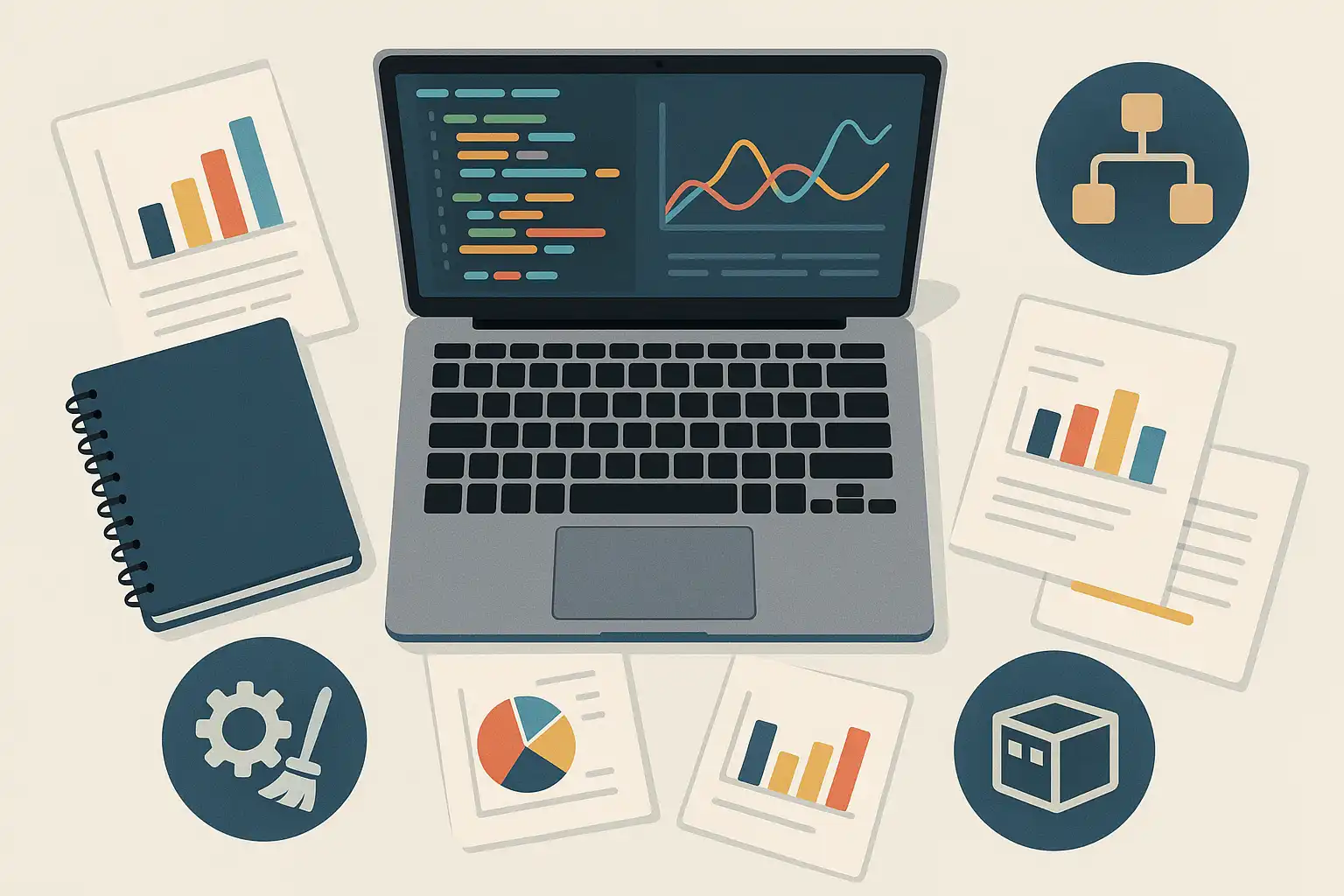
If you’ve ever wondered how to create your own machine learning model, you’re not alone. The good news is that building a custom machine learning solution is now faster and easier than ever. With modern tools, platforms, and simple workflows, anyone—from beginners to seasoned professionals—can develop and deploy a model in just minutes. In this article, you’ll get step-by-step guidance, practical examples, and answers to common questions, so you’ll know exactly where to start and how to succeed.
What Are the Essential Steps to Create Your Own Machine Learning Model?
Creating your own machine learning model might sound technical, but it’s simply a structured process you can follow. Let’s break it down into manageable steps:
- Collect relevant data. The first step is to gather data related to your problem. For example, if you want to predict house prices, collect data with features like size, location, and price history.
- Preprocess and clean your data. Raw data can be messy. Preprocessing includes handling missing values, correcting errors, converting text to numbers, and ensuring all data is consistent.
- Choose a model type. Decide which model suits your problem. For prediction tasks, regression models work well. For classifying categories (like spam or not spam), classification models are best.
- Split your data. Divide your dataset into training and testing parts. The training set teaches the model; the test set checks how well it learned.
- Train your model. Use a tool or library (like Python’s scikit-learn) to fit the model to your training data.
- Evaluate performance. Use metrics—such as accuracy, precision, recall, or mean squared error—to measure how well your model performs on unseen data.
- Tune and optimize. Adjust your model’s parameters to improve performance. Techniques like cross-validation or grid search help refine your results.
- Deploy your model. Once trained, your model is ready to make real-world predictions. Deployment tools like Docker and Kubernetes make it easy to scale and share.
Following these steps will allow you to create your own machine learning model, regardless of your experience level.
Which Tools and Platforms Make Model Building Fast?
Choosing the right tools can make a big difference in how quickly you create your own machine learning model. Let’s look at some widely-used platforms and languages that streamline this process:
- Python: The go-to language for machine learning. It’s beginner-friendly, has extensive documentation, and offers libraries like scikit-learn, pandas, and TensorFlow.
- Jupyter Notebooks: Interactive coding environments ideal for experimenting, visualizing data, and sharing results.
- AutoML Tools: Platforms like Google Cloud AutoML and Microsoft Azure Machine Learning automate many steps, allowing you to build models with little manual coding.
- Deployment Solutions: Docker and Kubernetes help containerize your model, making deployment simple and scalable.
Let’s illustrate: Suppose you’re new to machine learning. Using Python and a Jupyter Notebook, you can load your data, run a few code cells, and have a trained model in less than half an hour.

How Can Beginners Succeed with Minimal Experience?
Great news—beginners can confidently create their own machine learning model by following a few core concepts and practical steps. Start by learning key terms:
- Features: These are input variables, like age or price, that help predict an outcome.
- Labels: The outcomes you want to predict, like “yes” or “no”, or a value such as house price.
- Data splits: Divide data into training (to teach), validation (to tune), and testing (to assess accuracy).
Next, find a problem you’re interested in—maybe predicting sales or sorting emails—and gather a small dataset. Use simple models at first, such as linear regression or decision trees, which are easy to interpret. Libraries like scikit-learn provide clear documentation and built-in tools for evaluation. As you gain confidence, you can experiment with advanced models and more complex datasets.
In the context of professional environments, some teams have improved efficiency by using custom AI software development services to build tailored solutions that fit specific business needs. This approach can further simplify the journey for organizations adopting machine learning.
Benefits of Using Pre-Built Tools
- Abstract complex setup and coding, letting you focus on learning.
- Provide templates and examples to speed up development.
- Include built-in metrics for easy evaluation (e.g., accuracy, recall).
- Allow for quick experimentation and iteration.
With these resources, any beginner can confidently take their first steps and quickly iterate on their first machine learning model.
What Are the Best Practices for Evaluating Your Model?
Evaluation is a crucial part of any model-building process. It determines how well your machine learning model performs and if it’s ready for deployment. Here are the best practices you should follow:
- Use the right metrics. For classification models, use accuracy, precision, recall, or F1-score. For regression, use mean squared error or R² score.
- Test on new data. Always evaluate your model on data it hasn’t seen before. This checks how well it generalizes.
- Cross-validation. This technique splits your data into parts, training and testing multiple times, giving a more reliable accuracy measure.
- Avoid overfitting. A model that’s too closely tuned to the training data may perform poorly on new data. Simpler models often generalize better.
For those who want in-depth guidance on these methods, consider participating in a free online data science bootcamp to explore more real-world examples and industry feedback.
Common Mistakes to Avoid
- Ignoring missing or inconsistent data during preprocessing.
- Using all data for training and none for testing.
- Overfitting to the training set, resulting in poor future performance.
- Choosing complex models before mastering the basics.

How Do You Deploy a Machine Learning Model in Minutes?
After creating and evaluating your model, it’s time to deploy it. Deployment means making your model available to answer real-life questions or automate tasks. Here’s a fast-track guide:
- Choose a deployment tool. Docker is popular for creating portable, easy-to-share model containers. Kubernetes can scale your model as demand grows.
- Containerize your model. Package your trained model and its environment into a Docker container. This ensures it runs the same everywhere.
- Deploy to the cloud or servers. Use cloud platforms (like AWS, Google Cloud, or Azure) or your own servers to host your container.
- Expose an interface. Most models are made available via web APIs, so other programs or users can send data and receive predictions.
For teams looking to scale and accelerate projects, adopting a data science team augmentation accelerator can help quickly build expertise and handle larger deployments.
Why Use Docker and Kubernetes?
- Easy portability and reproducibility: Move your model between computers with no setup issues.
- Consistency: The same environment everywhere reduces errors.
- Scalability: Kubernetes can automatically scale resources based on usage.
- Industry adoption: Many organizations use these tools for production models, ensuring your skills are widely applicable.
What Are Some Practical Examples of Machine Learning Model Creation?
Let’s consider a quick example. Suppose you want to predict customer churn for a business. Using Python, you could collect historical customer data, clean it, choose a logistic regression model, and, after training on part of your data, test with the rest. Success is measured with accuracy and recall. Once tuned, you deploy the model to a cloud server. Within minutes, stakeholders start receiving real predictions, improving decision-making.
Organizations overcoming industry data science challenges and solutions often use similar workflows, highlighting the practicality of rapid model development for real business problems.
Summary of Key Steps
- Collect data
- Clean and preprocess
- Select and train a model
- Evaluate with proper metrics
- Tune for better results
- Deploy for real-world use
Frequently Asked Questions
1. Can I create my own machine learning model without coding knowledge?
Yes! Many platforms offer visual interfaces and guided workflows. AutoML solutions from major cloud providers allow you to build and deploy models with minimal code.
2. How long does it really take to create a basic model?
If you use clean data and beginner-friendly tools, you can create your own machine learning model in under 30 minutes. More complex projects may take longer due to data gathering and experimentation.
3. Which is the best programming language for beginners?
Python is widely recommended because of its simple syntax, rich ecosystem, and strong community support. It’s used in countless tutorials and professional projects.
4. What resources help me learn model building quickly?
Interactive tutorials, online courses, and data science bootcamps can accelerate your learning. Start with small projects and gradually progress to more advanced tasks as you gain confidence.
